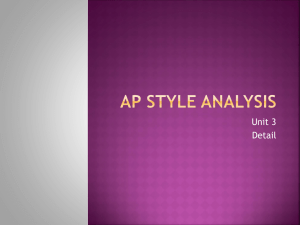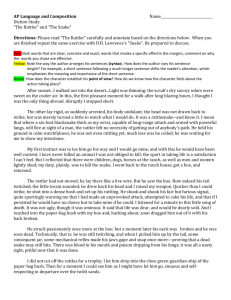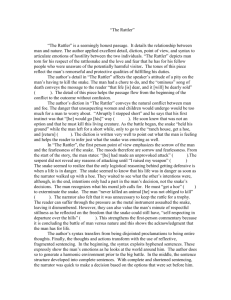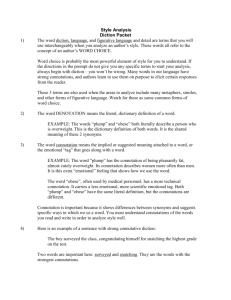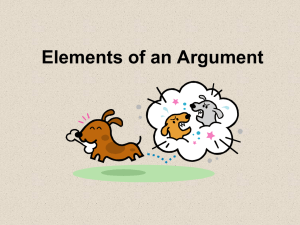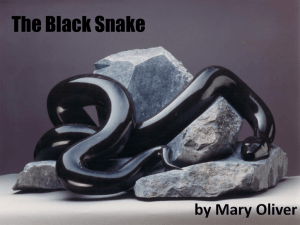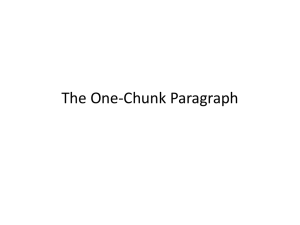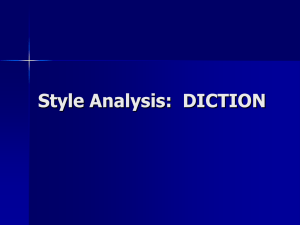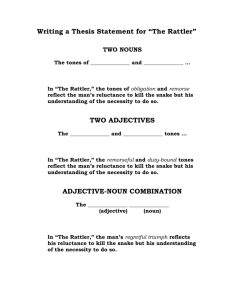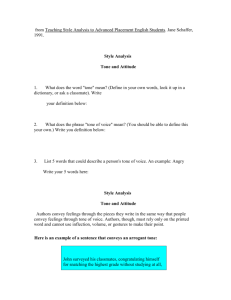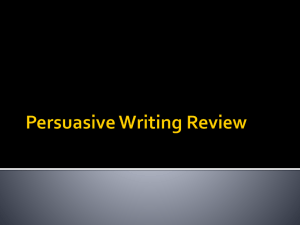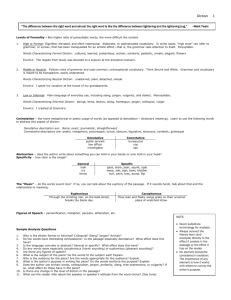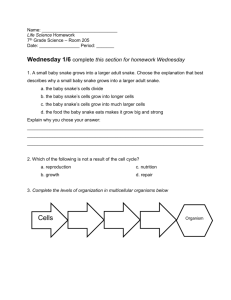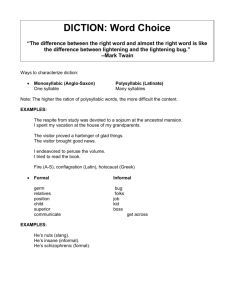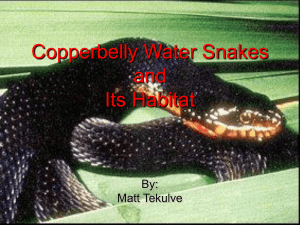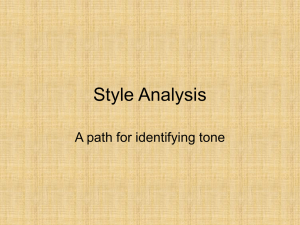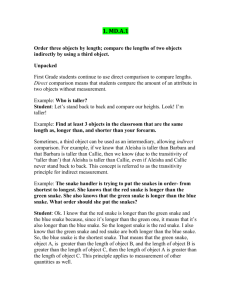DETAILS
advertisement
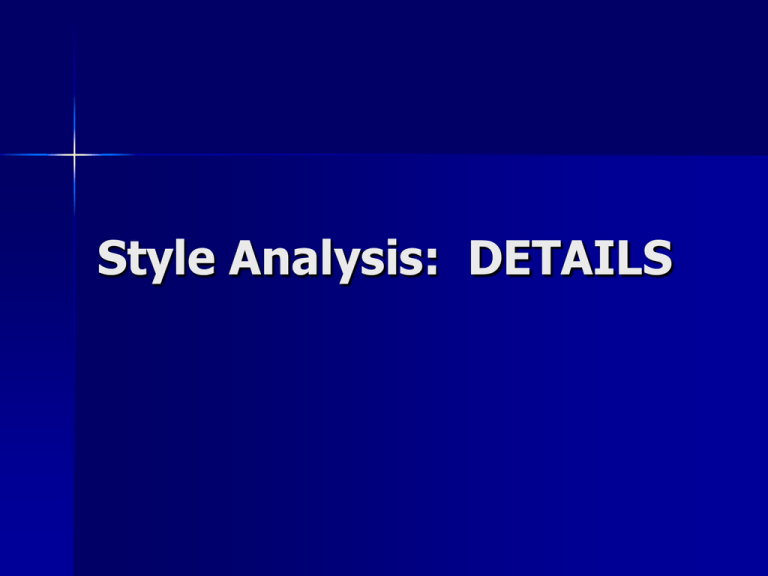
Style Analysis: DETAILS Part III: DETAILS Details are concrete description (can include figurative language); think “imagery” Who, what, when, where Remember – Diction connotative vocabulary – Details concrete description Details are concrete Who? What? When? Where? Why? Example: “turned a little to watch what I would do” This supplies CONCRETE detail to the reader; it helps us visualize the snake turning around as it sits on the desert sand Group Practice: Read “The Rattler” (again ) With a different color pen or highlighter from what you used for the diction analysis, highlight any examples of details or imagery that strike you as significant Detail Paragraph: Topic Sentence The sentence should include the word detail and give a focus for the paragraph. EXAMPLE: The author’s detail illuminates the standoff and subsequent duel between the man and snake. Detail Paragraph: Concrete Detail Sentence Just as you did with diction, you will write an example sentence. There is one difference in the CD: you will include only TWO quotations because detail and imagery require more words than diction to convey an idea: EXAMPLE: The snake “[turns] a little to watch” the man as it waits to see if he will go “back to the ranch house, [get] a hoe, and [return].” Detail Paragraph: Commentary Sentences These should comment on the images conveyed by the detail. Commentary does not mean paraphrasing the quotation sentence; it means thinking about the EFFECT of the images suggested by the detail. Sample Analysis for “The Rattler” Quotation “turned a little to watch” go “back to the ranch house, [get] a hoe, and [return]” Commentary not afraid or hesitant casual reaction to trivial interruption calm watching of a possible threat Sample Detail Paragraph The author’s detail illuminates the standoff and subsequent duel between the man and snake. The snake “[turns] a little” to watch the man as it waits to see if he will go “back in the ranch house, [get] a hoe, and [return].” The snake is not afraid, hesitant, or easily unnerved because it knows its own formidable power. It moves its head casually, glancing over to see what interesting but trivial intrusion has arrived. After the man kills the reptile, he “does not cut the rattles off” but instead lets the snake “drop into the bush.” He does not want to take its life and feels no satisfaction in its death. The man’s respectful actions in response to the dignified presence of the snake are worthy. As he performs his distasteful yet necessary task, he mourns the loss of grandeur and nobility. Paired Practice: Henry James Passage Read the Henry James passage Underline, circle, or highlight the details in the passage Discuss/chart quotations and commentary Rough draft of paragraph
